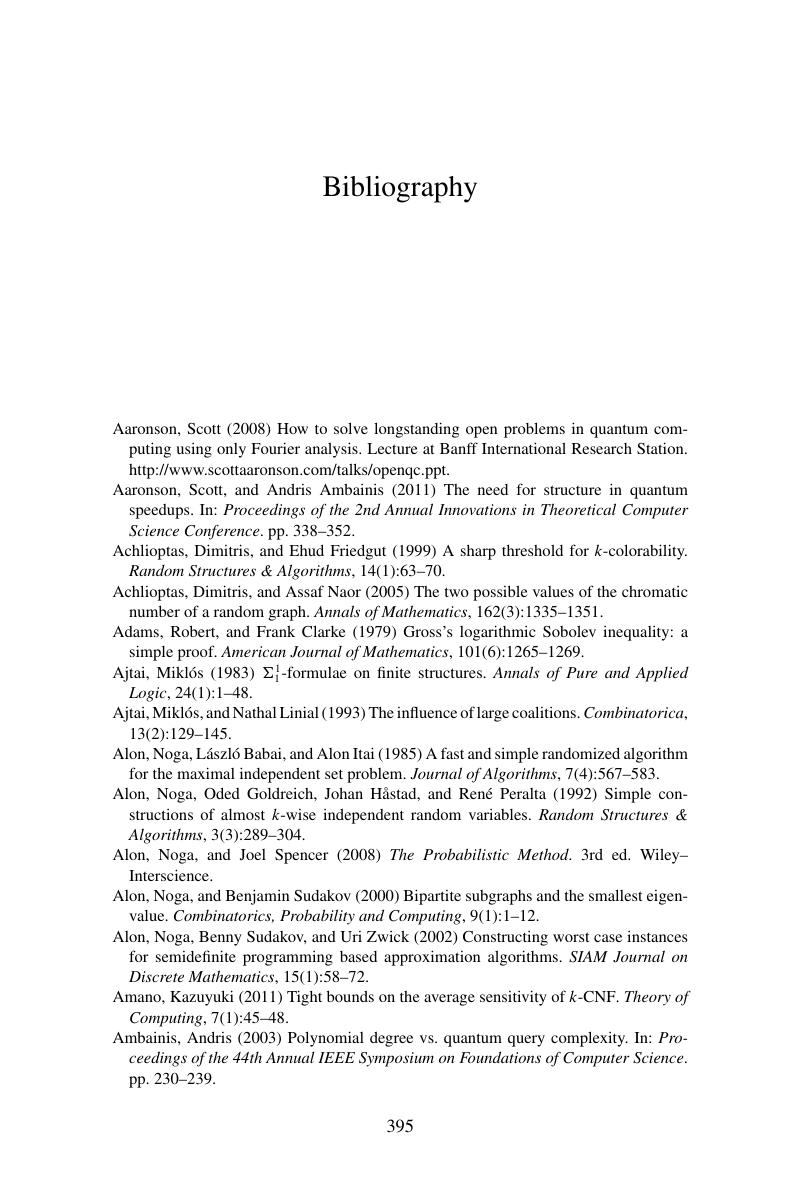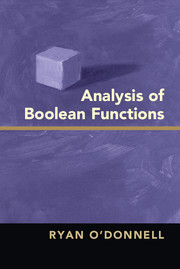Book contents
- Frontmatter
- Dedication
- Contents
- Preface
- List of Notation
- 1 Boolean Functions and the Fourier Expansion
- 2 Basic Concepts and Social Choice
- 3 Spectral Structure and Learning
- 4 DNF Formulas and Small-Depth Circuits
- 5 Majority and Threshold Functions
- 6 Pseudorandomness and F2-Polynomials
- 7 Property Testing, PCPPs, and CSPs
- 8 Generalized Domains
- 9 Basics of Hypercontractivity
- 10 Advanced Hypercontractivity
- 11 Gaussian Space and Invariance Principles
- Some Tips
- Bibliography
- Index
- References
Bibliography
Published online by Cambridge University Press: 05 July 2014
- Frontmatter
- Dedication
- Contents
- Preface
- List of Notation
- 1 Boolean Functions and the Fourier Expansion
- 2 Basic Concepts and Social Choice
- 3 Spectral Structure and Learning
- 4 DNF Formulas and Small-Depth Circuits
- 5 Majority and Threshold Functions
- 6 Pseudorandomness and F2-Polynomials
- 7 Property Testing, PCPPs, and CSPs
- 8 Generalized Domains
- 9 Basics of Hypercontractivity
- 10 Advanced Hypercontractivity
- 11 Gaussian Space and Invariance Principles
- Some Tips
- Bibliography
- Index
- References
Summary

- Type
- Chapter
- Information
- Analysis of Boolean Functions , pp. 395 - 416Publisher: Cambridge University PressPrint publication year: 2014



